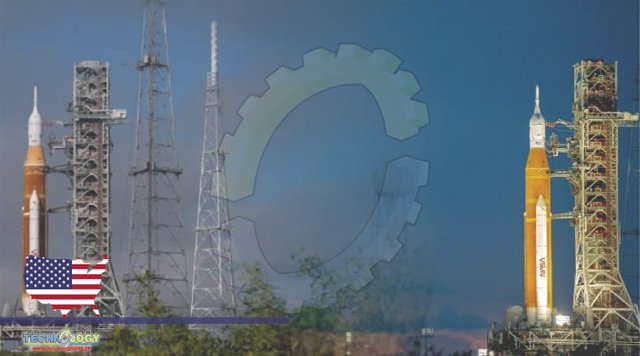Fuel leak on Artemis 1 the NASA’s second attempt to launch its new Artemis 1 moon rocket on Saturday (Sept. 3) will likely take weeks to fix, and may even force the megarocket off its launch pad,

The liquid hydrogen leak occurred Saturday morning as NASA tried to fuel its massive Space Launch System (SLS) megarocket to launch Artemis 1, an uncrewed test flight to the moon, from Pad 39B here at Kennedy Space Center (KSC). Despite three separate tries to fix the leak, engineers weren’t able to stem it and ultimately stood down to assess the situation further. That assessment, and the repair work it ends up recommending, will keep Artemis 1 on the ground for about two more weeks at a minimum.That launch period closes on Tuesday (Sept. 6). Artemis 1 will now have to wait until the next window, which runs from Sept. 16 to Oct. 4, to try again. But it may end up slipping deeper into October — another window runs from Oct. 17 to Oct. 31 due to safety requirements that could force the SLS rocket back into KSC’s cavernous Vehicle Assembly Building (VAB) during the repairs. (There’s also a potential conflict during the earlier window: SpaceX’s Crew-5 astronaut mission to the International Space Station is scheduled to lift off Oct. 3 from KSC’s Pad 39A.) The first Artemis 1 launch attempt, on Monday (Aug. 29), was scrubbed after the team noticed that one of the four RS-25 engines that power the SLS core stage wasn’t cooling down properly before launch. Analyses soon traced that issue to a faulty temperature sensor, and the team decided to push ahead with another try on Saturday.
Mission team members also successfully troubleshot a hydrogen leak during Monday’s try, but the one they saw on Saturday was different: it was a lot bigger. The Saturday leak occurred near the base of the SLS rocket in what NASA calls a “quick disconnect,” a fitting that connects a liquid hydrogen fuel line to the core booster to fuel it for launch. The leak occurred after a brief “inadvertent” overpressurization of the fuel line that was three times the acceptable pressure, said Mike Sarafin, NASA’s Artemis 1 mission manager. “This was not a manageable leak,” Sarafin said. The leak led to levels of flammable hydrogen gas near the rocket that were several times higher than the acceptable range, he added. It’s too early to tell if the leak was caused by the overpressurization event (which was triggered by an errant manual command from the Launch Control Center) or not, Sarafin said. “We want to be deliberate and careful about drawing conclusions here, because correlation does not equal causation,” he said. One thing is clear, however: The quick disconnect’s soft seal gasket will likely have to be replaced. NASA engineers will meet next week to decide if that can be done at Launch Pad 39B (which would require a special enclosure to be built around the site) or if the 322-foot-tall (98 meters) rocket must be rolled back inside the VAB for easier access.
Source: This news is originally published by space